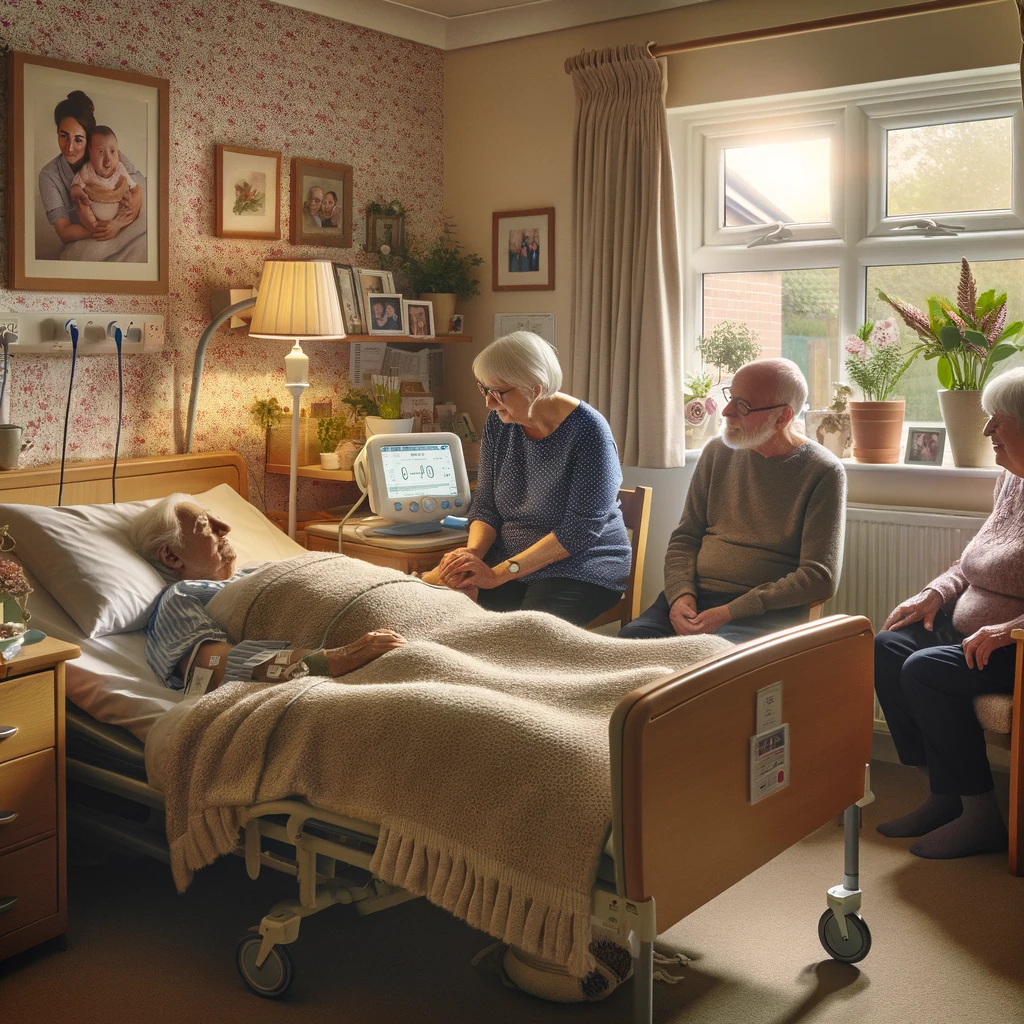
Palliative care is a special field of medicine that relies heavily upon compassion and quality of life improvement for patients and their families at the end of their lives. Within the drive for technological innovation in healthcare, we must ask ourselves how these advancements can serve not just clinical needs but also the emotional and psychological comfort of patients and their families.
According to Zadeh RS et al., in their integrative review, “Key environmental factors shown to affect end-of-life care included the ambient environment” (J Pain Symptom Manage. 2018 Mar; 55(3): 1018–1034). The ambient environment encompasses more than just the physical space; it influences the emotional and psychological atmosphere experienced by patients. In palliative care settings, where the focus extends beyond medical interventions to comfort and tranquillity, managing this ambient environment is essential for best quality care.
Miller EM et al. The Physical Hospital Environment and Its Effects on Palliative Patients and Their Families: A Qualitative Meta-Synthesis underscores the influence of the physical hospital environment on palliative patients and their families by noting, “The theme of ambience was mentioned in almost half of the papers and described how the physical environment and atmosphere affected the patients and families emotionally, which triggered connotations of whether the environment felt safe to them” (HERD: Health Environments Research & Design Journal Volume 15. Issue). The sense of safety and emotional well-being provided by a serene environment can be just as crucial as the clinical care received.
When addressing these environmental and emotional needs, hospital staff need to consider a wide range of issues, background noise being one of them. A hospital environment is frequently noisy, intrusive and lacks privacy.
BEAMS offers a compassionate technological solution. By locating and identifying hospital alarms from prompt and appropriate action, BEAMS plays a critical role in maintaining a calm and soothing atmosphere within palliative care wards. It ensures that the necessary alerts are conveyed without the jarring intrusion of persistent beeping that so often characterises clinical settings.
The clear interpretation of tones to spoken native language means that intrusions from staff are kept to a minimum, e.g., “near end of infusion” means that staff can prepare to change the infusion bag and enter the patient room at notification of “end of infusion” – rather than multiple room entries to locate and identify the alarm, find appropriate staff who also locate and identify alarm, to then action.
With BEAMS, nurses and caregivers can spend more time providing direct, compassionate care rather than locating and interpreting an overwhelming array of alarms. Improving patient care, offering comfort and reassurance in the knowledge that needs will be met promptly, and it also provides families with the peace of mind that their loved ones are in a safe, attentive environment. For staff, they have more time to provide the compassionate care they often see as the most rewarding element of their work.
The integration of technology in palliative care, when done with compassion and understanding of patient needs, can profoundly improve the end-of-life experience. BEAMS provides the time and environment to enable compassionate care at end of life. As hospitals and hospices continue to explore and implement new technologies, we are here to support in the belief that, at the end of life, every moment should be as peaceful and comforting as possible.
If you’d like to know more, we’d love to hear from you. Please feel free to contact us.